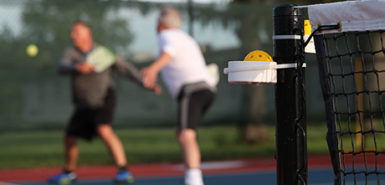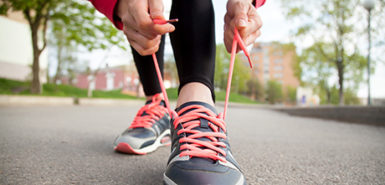
It’s no secret that exercise is good for the body.
Combined with a healthy diet and lifestyle, it can work wonders for cognitive and emotional health, too—and promote physical healing.
“Recommendations from the American College of Sports Medicine suggest three, 20-30-minute periods of vigorous activity a week or 150 minutes of moderate exercise,” said Allyn Richards, PhD, a clinical psychologist with Spectrum Health. “Even small amounts of exercise can have a positive effect, but the most protective and beneficial effects are found with consistent exercise.”
Aerobic exercise can elevate heart rate, and each person can choose a level of activity that’s best for them.
Walking is a simple, low-intensity activity that delivers a host of benefits and it’s something almost everyone can do.
Moderate exercise, such as jogging or dancing, is also a viable option for most people, while more intense activity such as running or biking can provide added benefits for heart health.
Healing power
Exercise doesn’t just help you get in shape and stay physically fit—it can also help injuries heal faster.
That’s why the treatment of injuries has changed over the years, said Phillip Adler, PhD, a licensed athletic trainer and operations manager for Spectrum Health Orthopedic Outreach.
“If you injure your ankle or strain a muscle and you don’t do anything, it’s not going to get better,” Dr. Adler said. “There are ways to stay active despite an injury and there are ways to use the body part and not make the injury worse.”
In years past, a patient undergoing knee surgery may be put in a leg cast or immobilizer for up to six weeks.
Nowadays, a patient may start passive range-of-motion exercises or other protective rehabilitation the day after surgery, Dr. Adler said.
Someone with a sprained ankle can do calf stretches or active range-of-motion exercises to activate muscles. Or, if a right knee has been operated on, a patient can follow some exercises for the left knee.
“The entire approach to physical injuries has changed,” Dr. Adler said. “We’re not isolating people and trying to immobilize them. We’ve found if a runner can’t run, or athletes can’t play their sports, they could get depressed.
“As a clinician, I try to keep individuals engaged in their activity,” he said. “I look for alternatives they can do to stay active and not worsen the injury.”
Boost your mood
Working out can boost your mood and reduce stress and anxiety, Dr. Richards said. It can also increase cognitive performance, helping with focus, attention and memory.
It can fight depression, too.
There’s also evidence that regular physical activity can help patients who have dementia.
While even short periods of exercise deliver immediate results, consistent activity will have long-lasting effects, Dr. Richards said.
“We find when folks are put in exercise programs and exercise on a consistent basis, it can lead to a considerable reduction in depression episodes,” she said.
Find what works
Ultimately, you should focus less on the intensity and more on what’s sustainable.
“If something is too intense, it can lead to negative effects,” Dr. Richards said. “It has to work for you, too.”
Take yoga, for example. It’s different than aerobic exercise but it can do wonders for boosting mood and reducing stress.
Remember, too, that exercise and diet tend to go hand in hand when you’re on the road to wellness. Healthy foods can contribute to improvements in mood.
Maintaining flexibility in your approach to exercise is important because it can bolster your commitment and keep you from getting discouraged.
This means you don’t have to remain completely focused on the exercise to reap the benefits.
Watch your favorite TV show while you ride a stationary bike, or listen to some music while you work out.
“If people find a way to make the exercising more enjoyable, then there’s greater likelihood they’ll continue engage in it,” Dr. Richards said. “And as beneficial as any type of exercise can be, consistency—being able to sustain it—is most important.”
 /a>
/a>
 /a>
/a>
 /a>
/a>